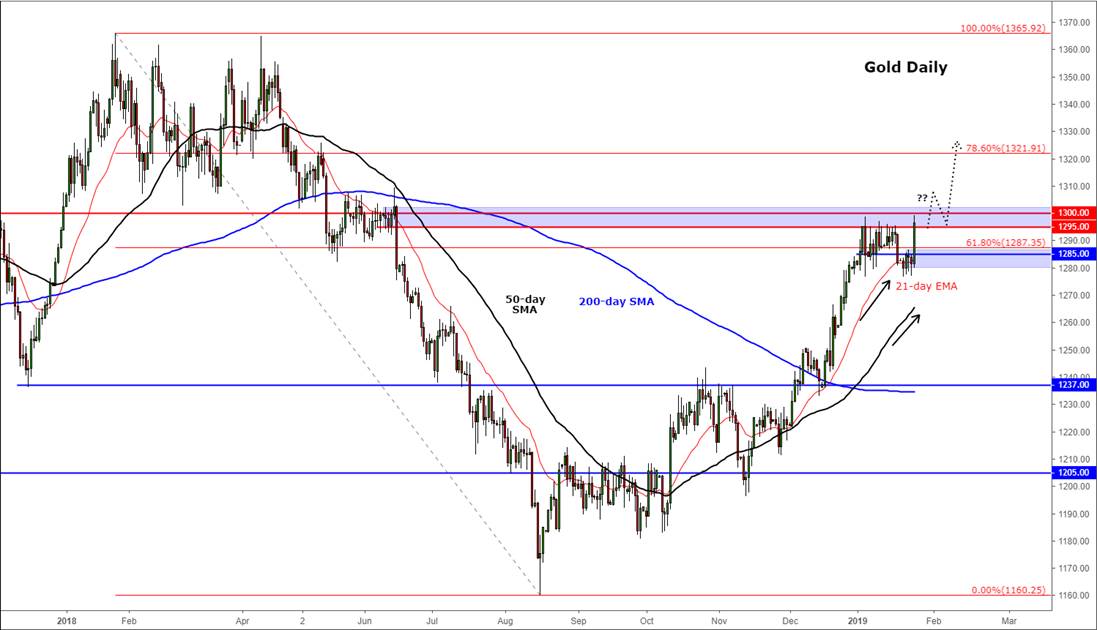Gold hits $1300 as dollar slumps
There are a number of factors supporting gold prices at the moment, most notably a big drop for the US dollar. The US dollar has weakened sharply ahead of next week’s FOMC meeting amid growing expectations that the Fed will re-iterate the need to pause its hiking cycle. We have been growing negative towards the buck for a while now and this dollar sell-off does not surprise us at all. The sell-off has been blamed on a Wall Street Journal report, which suggests that the Fed could be taking a more cautious approach towards the shrinking its huge balance sheet. Among the dollar pairs, EUR/USD has surged back to 1.14 after briefly breaking the 1.13 handle in the aftermath of the ECB policy decision yesterday. As we mentioned previously, a dovish ECB was already expected but Mario Draghi was not exactly too dovish after all. So, the euro’s recovery makes sense as previously sentiment towards it was very negative. In addition to a weaker dollar boosting buck-denominated gold, you have the Chinese yuan being on the rise on hopes over a resolution in US-China trade dispute. With a stronger renminbi, Chinese consumers can buy more gold than was the case previously. The fact that gold has so far refused to go down meaningfully from around the $1295-$1300 resistance area suggests that the selling pressure has not been strong as some would have expected from around this key hurdle. So, as things stand, gold looks poised for a potential breakout above $1300, which could then lead to further technical follow-up buying pressure in early next week.
Figure 1:
Risk Warning NoticeForeign Exchange and CFD trading are high risk and not suitable for everyone.You should carefully consider your investment objectives, level of experience and risk appetite before making a decision to trade with us.Most importantly, do not invest money you cannot afford to lose.There is considerable exposure to risk in any off-exchange transaction, including, but not limited to, leverage, creditworthiness, limited regulatory protection and market volatility that may substantially affect the price, or liquidity of the markets that you are trading.Margin and leverageTo open a leveraged CFD or forex trade you will need to deposit money with us as margin.Margin is typically a relatively small proportion of the overall contract value.For example a contract trading on leverage of 100:1 will require margin of just 1% of the contract value.This means that a small price movement in the underlying will result in large movement in the value of your trade – this can work in your favour, or result in substantial losses.Your may lose your initial deposit and be required to deposit additional margin in order to maintain your position.If you fail to meet any margin requirement your position will be liquidated and you will be responsible for any resulting losses.
